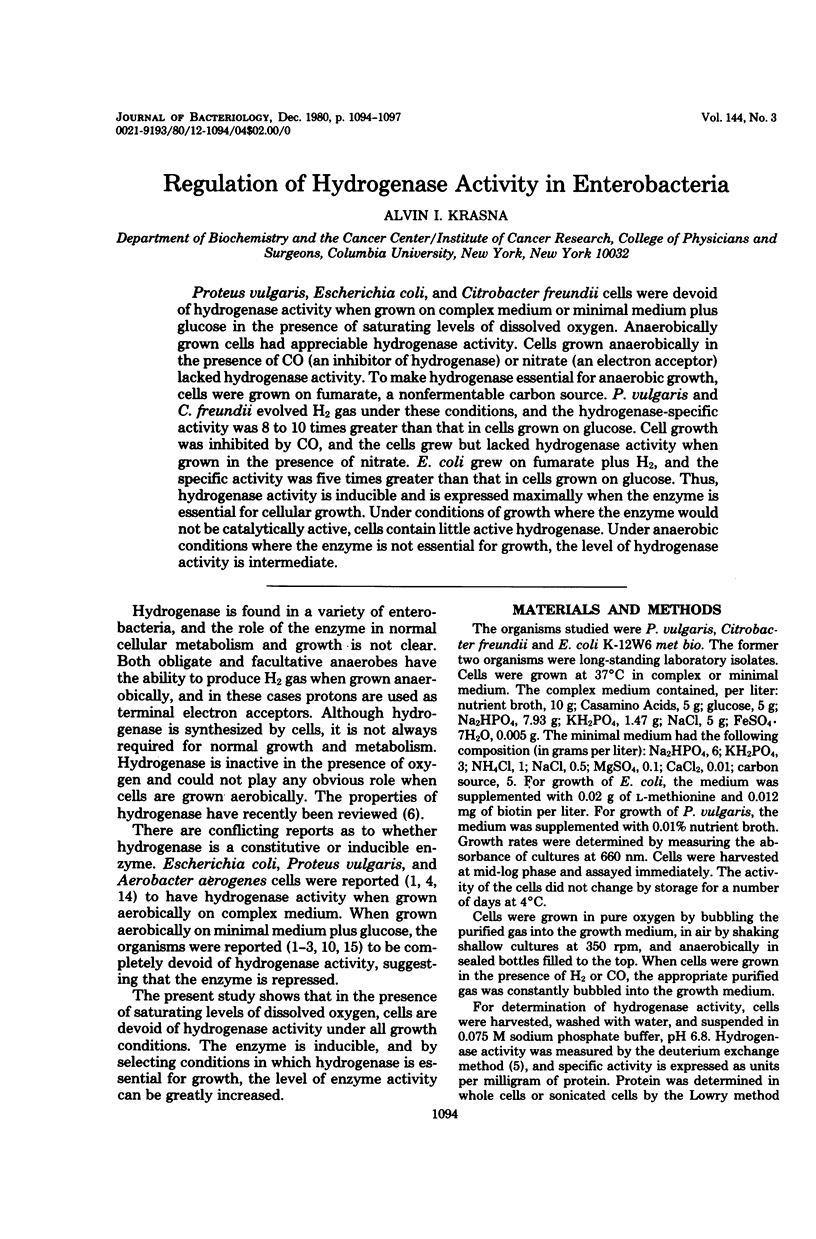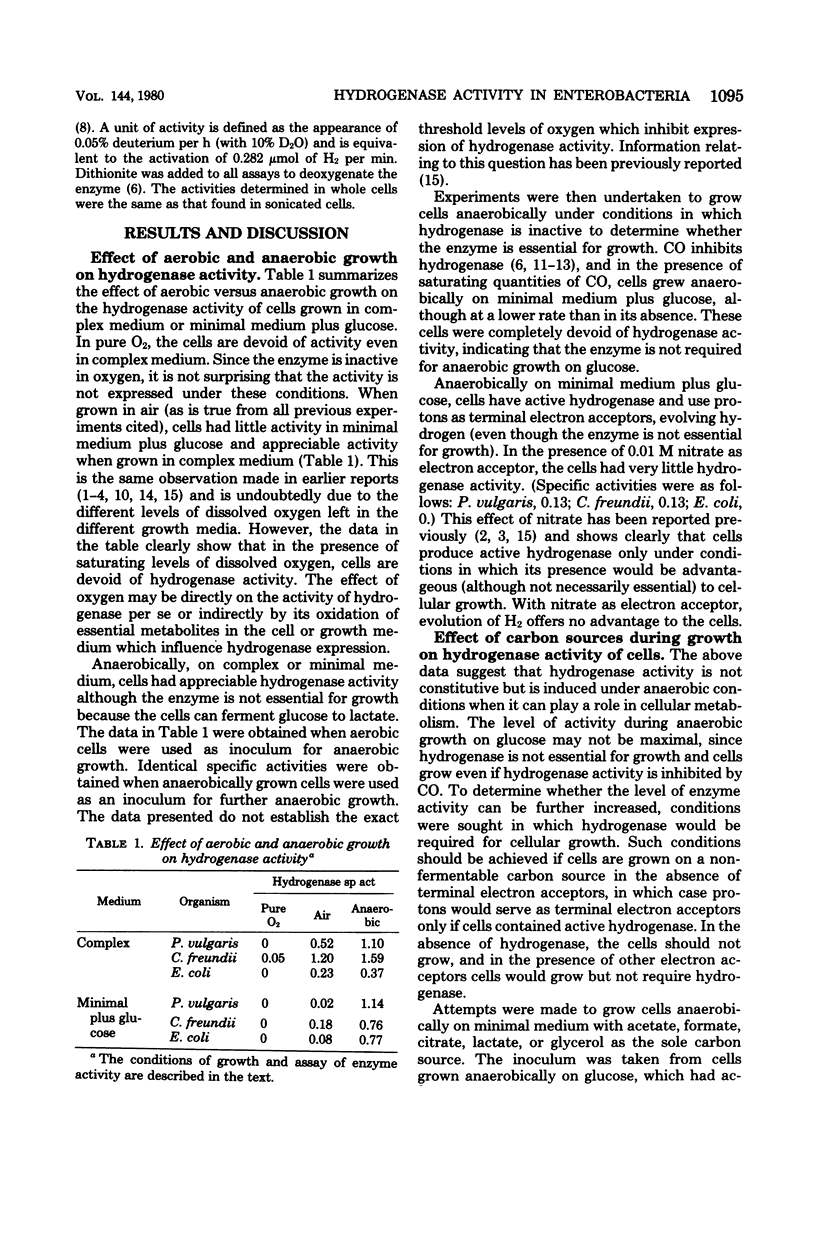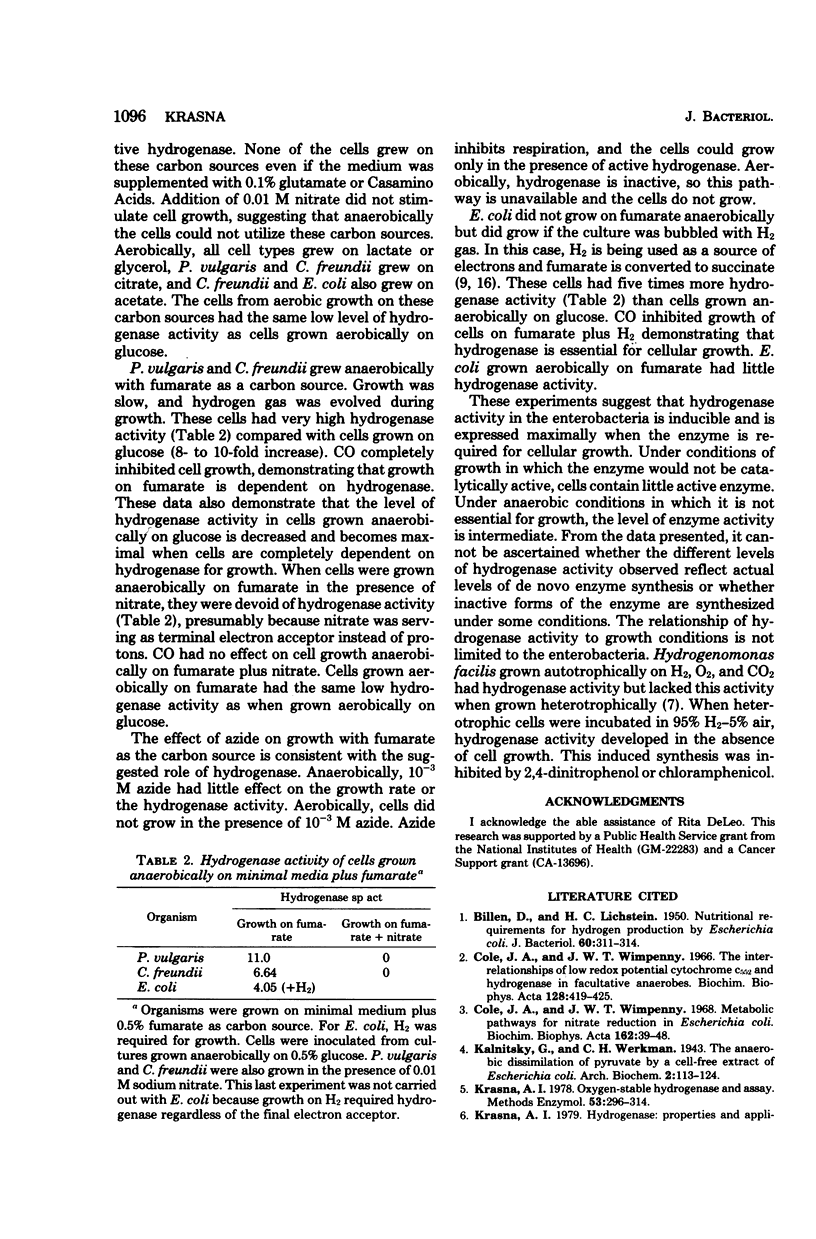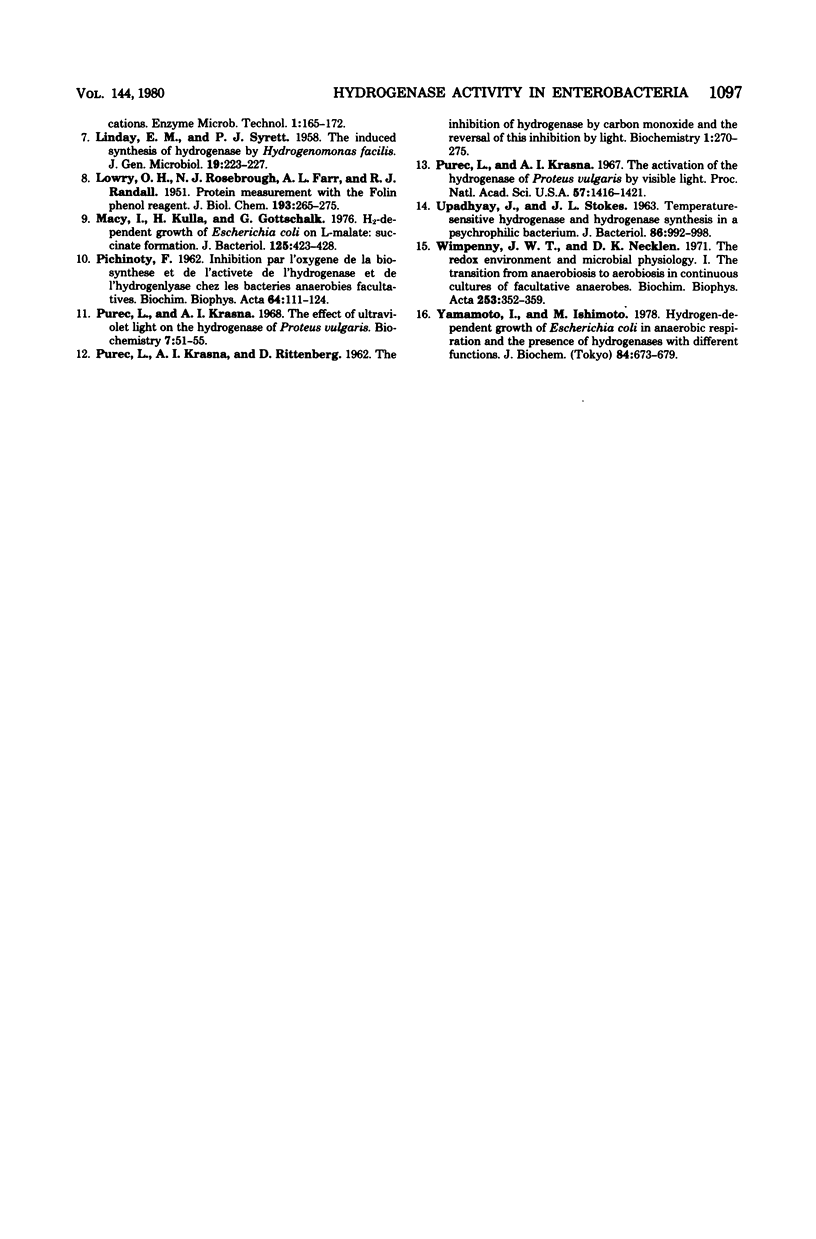Abstract
Proteus vulgaris, Escherichia coli, and Citrobacter freundii cells were devoid of hydrogenase activity when grown on complex medium or minimal medium plus glucose in the presence of saturating levels of dissolved oxygen. Anaerobically grown cells had appreciable hydrogenase activity. Cells grown anaerobically in the presence of CO (an inhibitor of hydrogenase) or nitrate (an electron acceptor) lacked hydrogenase activity. To make hydrogenase essential for anaerobic growth, cells were grown on fumarate, a nonfermentable carbon source. P. vulgaris and C. freundii evolved H2 gas under these conditions, and the hydrogenase-specific activity was 8 to 10 times greater than that in cells grown on glucose. Cell growth was inhibited by CO, and the cells grew but lacked hydrogenase activity when grown in the presence of nitrate. E. coli grew on fumarate plus H2, and the specific activity was five times greater than that in cells grown on glucose. Thus, hydrogenase activity is inducible and is expressed maximally when the enzyme is essential for cellular growth. Under conditions of growth where the enzyme would not be catalytically active, cells contain little active hydrogenase. Under anaerobic conditions where the enzyme is not essential for growth, the level of hydrogenase activity is intermediate.
Full text
PDF



Selected References
These references are in PubMed. This may not be the complete list of references from this article.
- BILLEN D., LICHSTEIN H. C. Nutritional requirements for hydrogenase production by Escherichia coli. J Bacteriol. 1950 Sep;60(3):311–314. doi: 10.1128/jb.60.3.311-314.1950. [DOI] [PMC free article] [PubMed] [Google Scholar]
- Cole J. A., Wimpenny J. W. Metabolic pathways for nitrate reduction in Escherichia coli. Biochim Biophys Acta. 1968 Jul 16;162(1):39–48. doi: 10.1016/0005-2728(68)90212-0. [DOI] [PubMed] [Google Scholar]
- Krasna A. I. Oxygen-stable hydrogenase and assay. Methods Enzymol. 1978;53:296–314. doi: 10.1016/s0076-6879(78)53036-x. [DOI] [PubMed] [Google Scholar]
- LINDAY E. M., SYRETT P. J. The induced synthesis of hydrogenase by Hydrogenomonas facilis. J Gen Microbiol. 1958 Oct;19(2):223–227. doi: 10.1099/00221287-19-2-223. [DOI] [PubMed] [Google Scholar]
- LOWRY O. H., ROSEBROUGH N. J., FARR A. L., RANDALL R. J. Protein measurement with the Folin phenol reagent. J Biol Chem. 1951 Nov;193(1):265–275. [PubMed] [Google Scholar]
- Macy J., Kulla H., Gottschalk G. H2-dependent anaerobic growth of Escherichia coli on L-malate: succinate formation. J Bacteriol. 1976 Feb;125(2):423–428. doi: 10.1128/jb.125.2.423-428.1976. [DOI] [PMC free article] [PubMed] [Google Scholar]
- PICHINOTY F. [Inhibition by oxygen of the biosynthesis and activity of hydrogenase and hydrogenlyase in some anaerobic bacteria]. Biochim Biophys Acta. 1962 Oct 8;64:111–124. doi: 10.1016/0006-3002(62)90764-3. [DOI] [PubMed] [Google Scholar]
- PUREC L., KRASNA A. I., RITTENBERG D. The inhibition of hydrogenase by carbon monoxide and the reversal of this inhibition by light. Biochemistry. 1962 Mar;1:270–275. doi: 10.1021/bi00908a013. [DOI] [PubMed] [Google Scholar]
- Purec L., Krasna A. I. The activation of the hydrogenase of Proteus vulgaris by visible light. Proc Natl Acad Sci U S A. 1967 May;57(5):1416–1421. doi: 10.1073/pnas.57.5.1416. [DOI] [PMC free article] [PubMed] [Google Scholar]
- Purec L., Krasna A. I. The effect or ultraviolet light on the hydrogenase of Proteus vulgaris. Biochemistry. 1968 Jan;7(1):51–55. doi: 10.1021/bi00841a008. [DOI] [PubMed] [Google Scholar]
- UPADHYAY J., STOKES J. L. TEMPERATURE-SENSITIVE HYDROGENASE AND HYDROGENASE SYNTHESIS IN A PSYCHROPHILIC BACTERIUM. J Bacteriol. 1963 Nov;86:992–998. doi: 10.1128/jb.86.5.992-998.1963. [DOI] [PMC free article] [PubMed] [Google Scholar]
- Wimpenny J. W., Necklen D. K. The redox environment and microbial physiology. I. The transition from anaerobiosis to aerobiosis in continuous cultures of facultative anaerobes. Biochim Biophys Acta. 1971 Dec 7;253(2):352–359. doi: 10.1016/0005-2728(71)90039-9. [DOI] [PubMed] [Google Scholar]
- Yamamoto I., Ishimoto M. Hydrogen-dependent growth of Escherichia coli in anaerobic respiration and the presence of hydrogenases with different functions. J Biochem. 1978 Sep;84(3):673–679. doi: 10.1093/oxfordjournals.jbchem.a132172. [DOI] [PubMed] [Google Scholar]


